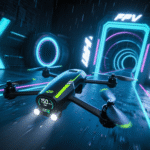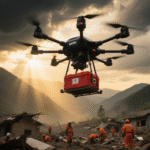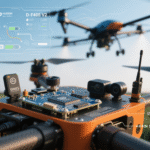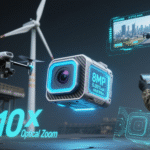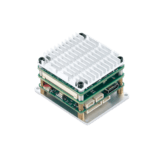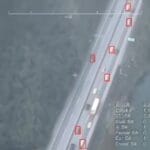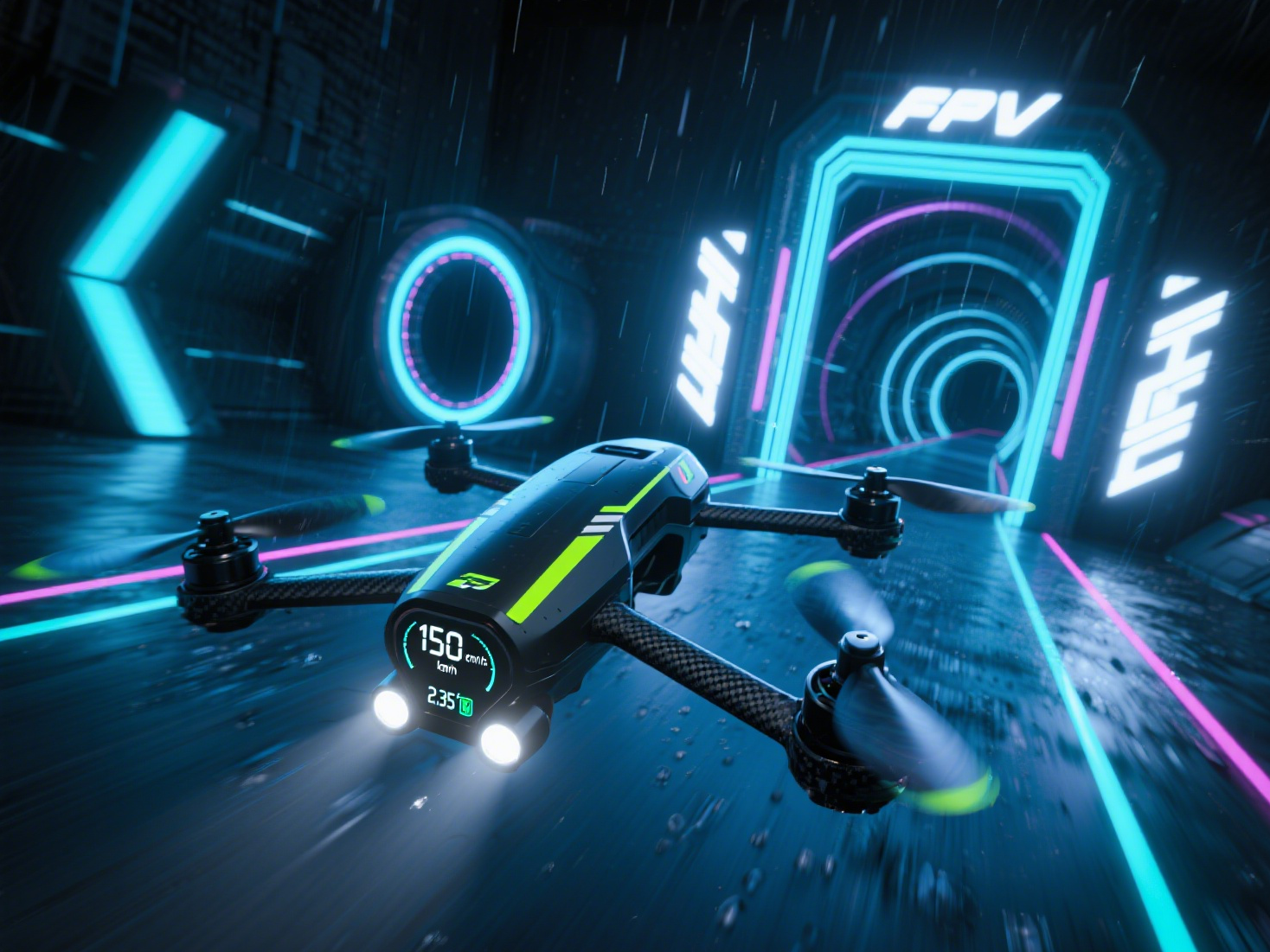
First-person-view (FPV) drone racing represents the ultimate fusion of technology and adrenaline. For enthusiasts wondering what does FPV drone mean, it's experiencing flight through the drone's perspective using real-time video transmission. Serious racers understand that hitting 150km/h isn't just a benchmark — it's the competitive edge that separates champions from participants. This comprehensive guide explores how to select the perfect FPV drone capable of dominating race circuits while maintaining optimal control. Understanding FPV Camera Drone Performance Metrics When selecting a high-speed FPV camera drone, these performance indicators determine racing success: Frame Architecture: Lightweight carbon fiber designs enhance agility for these drone quadrotor systems Motor and ESC Integration: High KV brushless motors paired with rapid-response ESCs enable explosive acceleration Propeller Efficiency: Advanced 3-blade designs with high-RPM materials ensure maximum thrust Flight Control Systems: Platforms like Betaflight or KISS enhance stability for fast drone with camera applications Video Transmission Quality: Low-latency HD systems (DJI O3) provide real-time control during high-speed maneuvers Engineering the Perfect Custom Drone for Speed Achieving consistent 150km/h performance requires meticulous component selection and aerodynamic optimization: High-Torque Motor Systems: 2810 or 2407 series motors deliver the acceleration needed for racing Advanced Power Systems: 6S LiPo batteries (22.2V) provide sustained power delivery Aerodynamic Optimization: Streamlined builds reduce drag for maximum efficiency Balanced Propulsion: Larger propellers (7*4*3 configuration) ensure stable thrust distribution These elements combine to create custom drone configurations that excel in both speed and stability. Spotlight: 7-Inch Racing FPV Drone - The Speed Specialist The 7-inch traversing FPV drone represents the pinnacle of racing engineering, specifically designed for long-distance high-speed competition. Technical Specifications: Control System: F405 flight controller Power Management: 4-in-1 50A ESC Video Transmission: 2.5W VTX system Imaging: Miniature FPV camera with real-time transmission Propulsion: Durable 2810 series motors Aerodynamics: 7*4*3 propeller configuration Power Source: 22.2V 4500mAh battery Performance: 150km/h maximum speed Operational Range: 15-20km distance capability Endurance: 21-30 minute flight duration Capacity: 2-3.5kg payload support Compact Power: FPV Small Drone Considerations While larger drones dominate speed competitions, FPV small drone options offer unique advantages for technical courses and training scenarios. These compact systems provide exceptional maneuverability in confined spaces while maintaining impressive acceleration profiles. Advanced Racing Techniques for FPV Drone Pilots Course Mastery: Pre-plan optimal racing lines to minimize unnecessary maneuvers Throttle Management: Maximum acceleration on straightaways, controlled speed in corners Precision Cornering: Master inside-line techniques for reduced lap times Dynamic Handling: Practice rapid direction changes and emergency maneuvers Simulator Training: Utilize platforms like Liftoff or Velocidrone for skill development Maintenance Protocols for Competition-Ready Drones Post-Flight Analysis: Comprehensive inspection of propellers, motors, and frame integrity Optical Maintenance: Regular cleaning of camera lenses and cooling systems System Calibration: Frequent flight controller recalibration for precision control Component Replacement: Proactive replacement of worn batteries and propellers Storage Best Practices: Proper environmental controls to prevent moisture damage Safety Framework for High-Speed FPV Operations Regulatory Compliance: Strict adherence to local drone operation regulations Operational Zones: Exclusive use of approved flying areas away from restrictions Protective Equipment: Mandatory FPV goggles and safety gear during events Fail-Safe Systems: Activated return-to-home and auto-land protocols
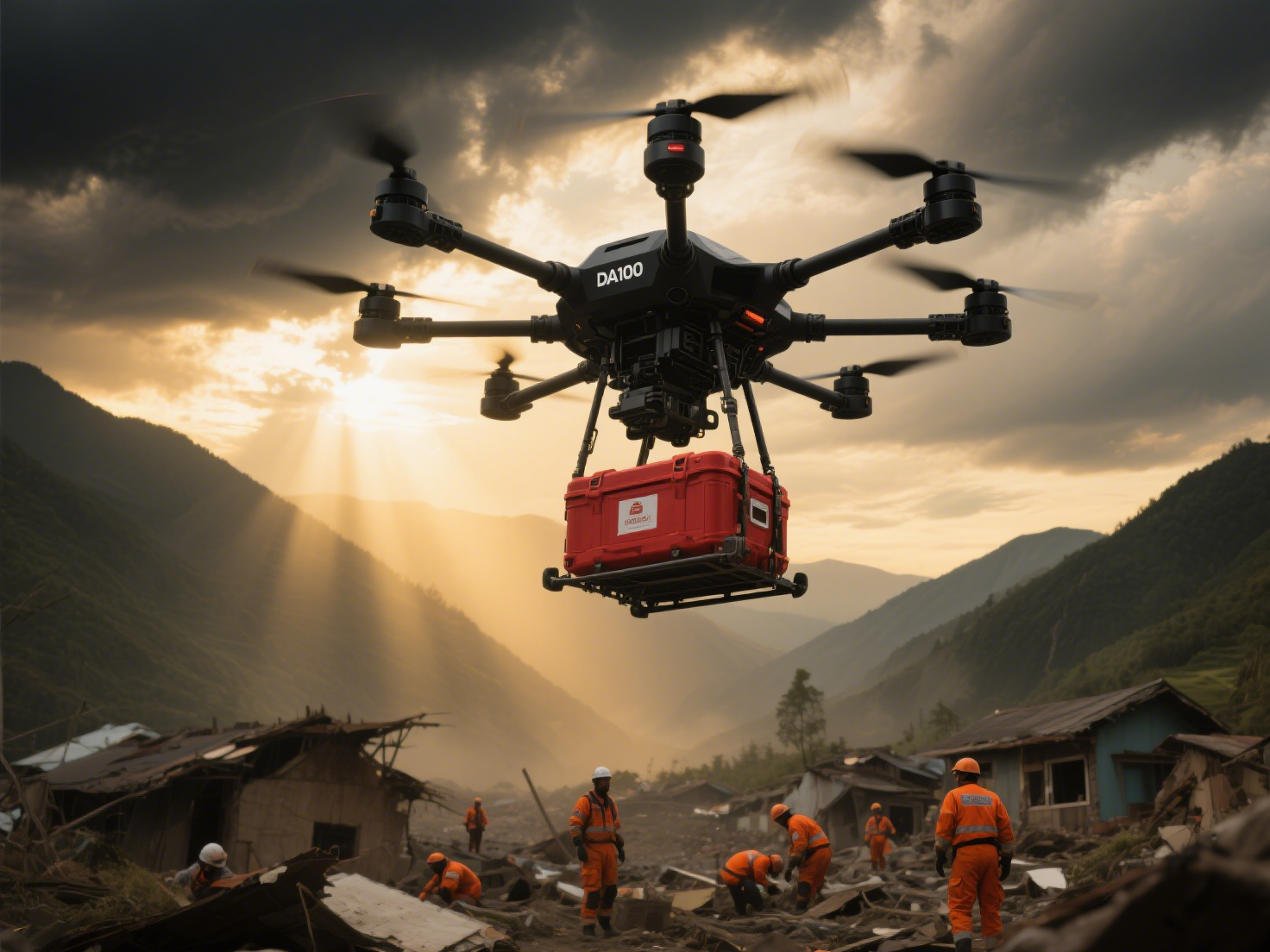
Revolutionizing Transport: The DA100 140kg Payload Heavy Lift Drone The Era of Heavy Lift Drones Has Arrived The logistics and emergency response sectors are undergoing a massive transformation, driven by the capabilities of heavy lift drones. These advanced unmanned aerial vehicles (UAVs), with their exceptional payload capacities, are redefining how we transport substantial cargo. Leading this change is the DA100, a large-load logistics heavy lift drone designed to carry up to 140kg, offering unprecedented efficiency and capability. Unlike standard drones, heavy lift drones like the DA100 provide significant advantages, including vastly greater payload capacity and extended flight range. This makes them ideal for transporting goods weighing 100kg, 200kg, and beyond, meeting rigorous industrial demands. With optimized propulsion and intelligent control systems, the DA100 ensures safe and efficient transportation of payloads exceeding 100kg. DA100: A Premier Heavy Lift Drone for Demanding Missions The DA100 is an industrial-grade heavy lift drone engineered for critical operations, including firefighting, aerial logistics, and heavy lifting tasks. Its airframe is constructed from high-strength composite carbon fiber, and with an IP68 waterproof rating, this robust drone can reliably support its maximum payload of 140kg even in adverse weather conditions like rain. 140kg Max Payload Capacity 45 min Max Flight Time 240kg Max Takeoff Weight 30km Remote Control Distance Engineering a Reliable Heavy Lift Drone To safely transport payloads of 100kg and more, the DA100 heavy lift drone incorporates a robust carbon fiber structure that delivers an ideal balance of lightweight design and exceptional strength. It is powered by multiple high-output motors and large-diameter propellers to guarantee stable performance during takeoff and landing, even at maximum capacity. The drone's military-grade triple-redundant flight control system ensures unwavering stability and safety in complex operational environments. Coupled with its IP68 rating, the DA100 is built to perform reliably in harsh conditions, making it an indispensable tool for emergency response teams. Key Technical Specifications of the DA100 Heavy Lift Drone Parameter Specification Body Material High-strength Composite Carbon Fiber Maximum Payload 140kg Maximum Takeoff Weight 240kg Flight Time (100kg load) 20-45 minutes Battery Capacity 120,000mAh Flight Control System Military-grade Triple-Redundant System Maximum Wind Resistance ≥6 levels (instantaneous ≥8 levels) Remote Control Distance 30km (open environment) Waterproof Rating IP68 (capable of flying in light rain) Transformative Applications for Heavy Lift Drones Heavy lift drones like the DA100 are revolutionizing numerous industries. Here are some of their key applications: 🚑 Emergency Medical Transport Enable rapid delivery of critical medical supplies, blood, and vaccines to remote or disaster-stricken areas where traditional transport methods fail. 🔥 Firefighting & Disaster Response Deliver firefighting equipment or water directly to inaccessible locations, proving critical for wildfire and natural disaster response. 📦 Logistics & Remote Delivery Transport materials and equipment to remote sites, drastically cutting delivery times and reducing reliance on manpower and infrastructure. 🏗️ Infrastructure Inspection Conduct detailed inspections of bridges, power lines, and other critical infrastructure from a safe distance using high-resolution cameras. ⚡ Military & Defense Logistics Execute rapid resupply missions in challenging environments without the need for runways, thereby minimizing risks to personnel. 🏝️ Island & Mountain Logistics Overcome geographical barriers to deliver essential supplies to isolated communities, eliminating the need for expensive infrastructure projects. Uncompromising Safety in Heavy Lift Drone Design Transporting payloads equivalent to a heavy lift drone 200kg class requires rigorous safety engineering. The DA100 incorporates multiple redundant systems, including dual power systems, precision GPS, obstacle avoidance radar, and automated return-to-base functions. All flight parameters are meticulously optimized for payload security. The drone features 360-degree situational awareness and emergency landing protocols, which are essential for safe operations in urban environments where avoiding obstacles and populations is paramount. The Future of Heavy Lift Drone Technology The DA100 stands as a pinnacle of current heavy lift drone technology, but innovation continues. The future will see AI-powered flight optimization, advanced battery tech for longer range, and new materials for even greater efficiency. As regulations adapt to accommodate large cargo drones, and with the support of 5G/6G networks, heavy lift drones will become integral components of smart logistics networks, working alongside automated systems to create seamless, highly efficient supply chains worldwide.
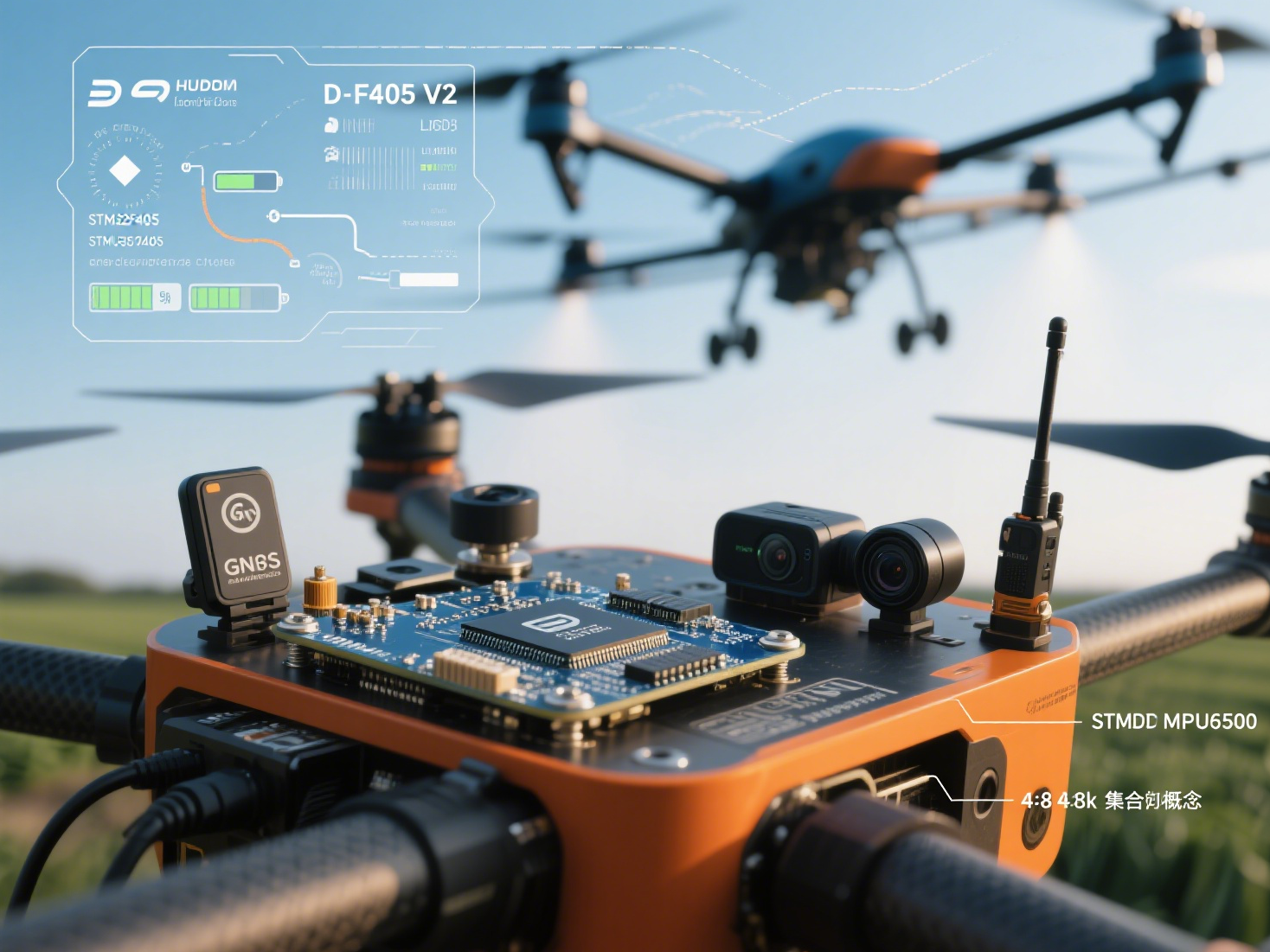
Introduction As unmanned aerial vehicles (UAVs) transform operations across logistics, agriculture, defense, and public safety, the demand for robust, intelligent flight controller systems has reached unprecedented levels. Modern flight controllers have evolved from basic stabilization units into the central nervous system of enterprise drones. This article examines critical integration strategies for navigation, obstacle avoidance, communications, and payload systems - with a special focus on implementing high-performance controllers like the D-F405 V2 in commercial applications. What Is a Flight Controller System? The flight controller (FC) serves as the computational core of UAVs, responsible for: Real-time flight stabilization through sensor feedback Processing commands from ground control or autonomous systems Managing communication between sensors, motors, and peripherals Enterprise-grade controllers feature industrial components like STM32 processors, RTOS capabilities, and support for firmware platforms including PX4 and ArduPilot. The D-F405 V2 exemplifies this category with its STM32F405RGT6 chip and professional sensor suite. Why Integration Matters for Enterprise UAVs Seamless subsystem integration delivers critical advantages: Reduced latency and hardware conflicts Enhanced mission efficiency through sensor fusion Autonomy in GNSS-denied environments Simplified architecture and lower development costs Key Integration Modules & Implementation Strategies 1. Navigation Systems Integration Enterprise UAVs require redundant, high-precision navigation. Flight controllers like the D-F405 V2 support: Multi-constellation GNSS/RTK positioning MPU6500 gyroscope for precise attitude control BMP280/DPS310 barometer for altitude hold Sensor fusion algorithms for real-time data synthesis Implementation Tip: Utilize the controller's 5 universal serial ports to connect GPS modules while maintaining separate IMU communication channels. 2. Obstacle Avoidance Systems The D-F405 V2's multiple UART interfaces enable simultaneous connections to: LiDAR for 3D mapping Stereo vision systems for object recognition Ultrasonic sensors for precision landing Radar modules for all-weather detection Design Consideration: Leverage the 16MB black box to log avoidance maneuvers for algorithm refinement. 3. Communication Systems With 5 configurable serial ports, the D-F405 V2 supports: MAVLink protocol for ground station communication LTE/5G modules for beyond-line-of-sight operations Redundant radio systems with fail-safe logic Encrypted data transmission Integration Advantage: Dedicated 9V/2A power supply ensures stable operation of communication peripherals. 4. Payload & Mission Systems The controller's 8 motor outputs and power management enable: Precision control of spraying systems in agriculture Synchronized camera gimbal operation for inspection Payload release mechanisms for delivery drones Multi-sensor integration for industrial inspections Industry Applications: Integration in Action Industry Integration Requirements D-F405 V2 Implementation Precision Agriculture Terrain following, spraying control, sensor fusion Barometer for altitude hold, 8CH outputs for nozzle control, serial ports for multispectral sensors Infrastructure Inspection Stable positioning, camera control, obstacle avoidance MPU6500 gyro for stabilization, black box for compliance logging, multiple UARTs for vision systems Logistics Precision landing, payload delivery, indoor navigation 9V power output for release mechanisms, compact 36x36mm footprint, Betaflight/INAV firmware flexibility Technical Specifications: D-F405 V2 Flight Controller Controller STM32F405RGT6 Gyroscope MPU6500 Barometer BMP280 or DPS310 (Optional) Black Box 16MB Motor Outputs 8 Channels Serial Ports 5 Universal Channels Power Output 5V/2.5A & 9V/2A Weight 8.2g Dimensions 36mm x 36mm Mounting 30.5mm x 30.5mm Firmware Betaflight: F405V2MPU6500 / INAV: RCF4V2 Selecting Enterprise Flight Controllers: Key Evaluation Criteria When evaluating controllers like the D-F405 V2 for commercial applications: Processing Power: STM32F405 provides 168MHz ARM Cortex-M4 performance I/O Capacity: 8 motor outputs + 5 serial ports enable complex integrations Sensor Support: Industrial-grade MPU6500 IMU with optional barometric sensors Data Management: 16MB black box for critical mission logging Power Distribution: Dual regulated outputs (5V/9V) for peripherals Firmware Flexibility: Betaflight and INAV compatibility Implementation Best Practices Hardware Integration Utilize the 30.5x30.5mm mounting pattern for vibration-isolated installation Leverage 9V/2A output for high-demand peripherals like LiDAR Implement CAN bus expansion through available serial ports Software Configuration Configure Betaflight/INAV for enterprise-specific flight modes Implement custom failsafe protocols using black box data Develop sensor fusion algorithms using raw IMU/barometer data Reliability Engineering Implement watchdog timers for critical processes Design redundant communication pathways Conduct thermal testing in operational environments Conclusion The D-F405 V2 Flight Controller demonstrates how racing-grade technology can be adapted for commercial UAV applications through strategic integration. Its combination of STM32 processing power, extensive I/O capabilities, and industrial sensors provides a robust foundation for enterprise drone systems. By implementing proper subsystem integration strategies across navigation, obstacle avoidance, communications, and payload management, organizations can develop high-performance UAV solutions optimized for their specific operational requirements. Ready to Integrate Advanced Flight Control? Our engineering team specializes in optimizing flight controllers like the D-F405 V2 for enterprise applications: Custom firmware development (PX4/ArduPilot/Betaflight) Sensor integration and calibration services Environmental testing and validation System architecture design Contact our UAV integration specialists for a free technical consultation
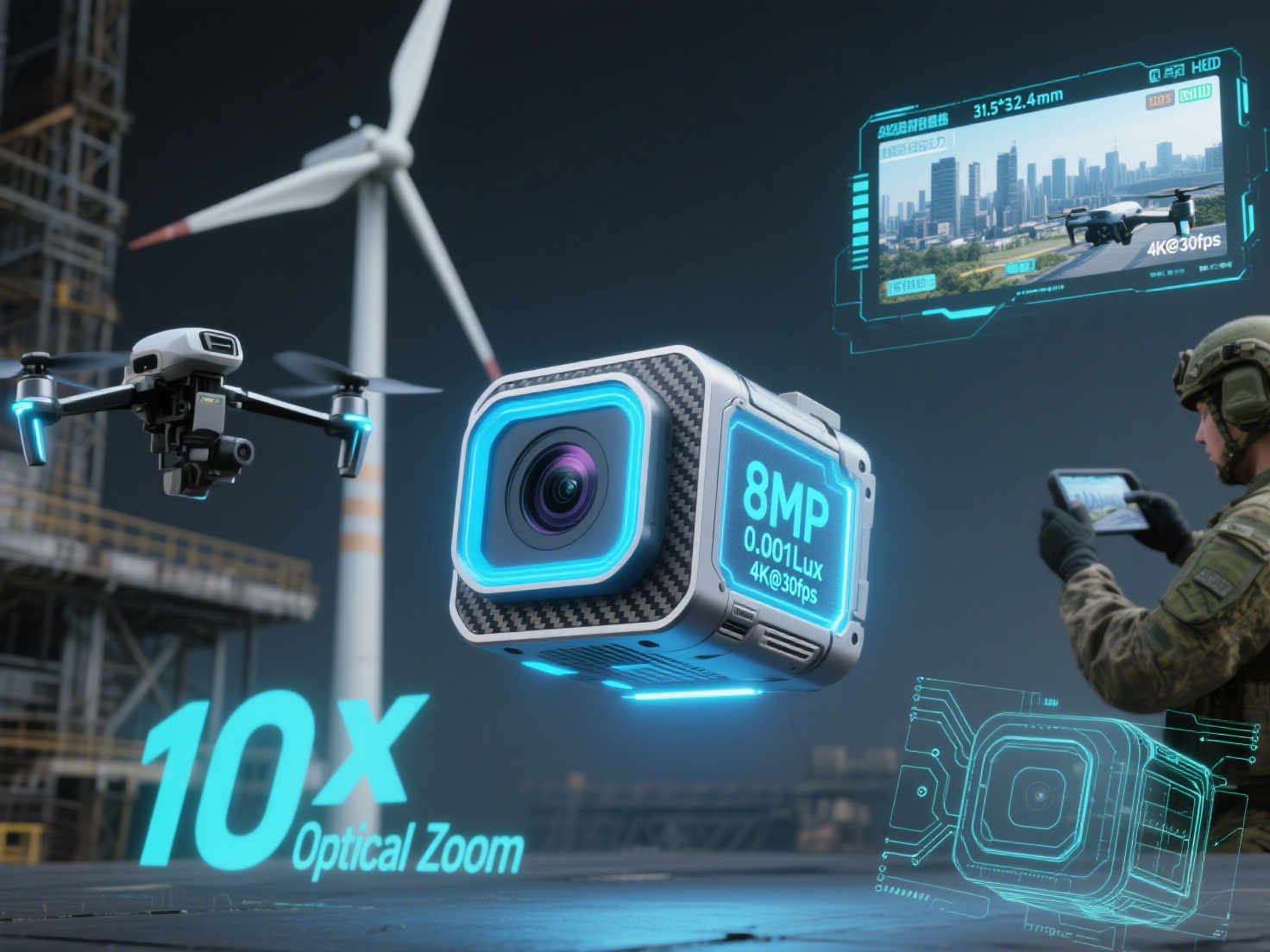
Professional UAV Camera Market Overview The current UAV camera market has formed a clear hierarchical system, from consumer-grade to industrial-grade to military-grade, with significant differences in performance, reliability and price among products at each level. Among them, the D-C8110UV 8MP 10X Optical Zoom 4K IP Drone Camera Module represents a high-end solution in industrial-grade products, with technical parameters approaching some military standards. D-C8110UV Core Technological Innovations Breakthrough Imaging Performance The module uses a 1/2.8-inch progressive scan CMOS sensor that supports 8MP(3840×2160)@30fps ultra-HD video output. Particularly noteworthy is its 0.001Lux/F1.6 low-light performance combined with a 10x optical zoom (4.8mm-48mm) lens that maintains clear imaging in near-total darkness. These specifications surpass most similar industrial products and approach military reconnaissance equipment levels. Intelligent Image Processing Architecture The integrated 1T computing power intelligent computing unit is the core competitive advantage of this product, supporting deep learning algorithms to achieve: Real-time motion detection and tracking Automatic scene recognition and optimization Intelligent exposure and white balance adjustment 3D digital noise reduction (3D DNR) Industrial Application Performance Power Facility Inspection Case In a 500kV high-voltage transmission line inspection project, drones equipped with D-C8110UV successfully achieved: Identification of 2mm diameter wire wear at 30 meters distance Early detection of poor contact nodes through thermal imaging overlay Complete inspection of 5km lines in a single flight Quasi-Military Performance Verification Although positioned as an industrial-grade product, D-C8110UV demonstrates military potential in multiple tests: Environmental Adaptability Tests: Stable operation in temperatures from -30°C to 60°C IP67 protection rating certification Electromagnetic interference resistance exceeds EN61000-6-2 standard Tactical Indicators Evaluation: 10x optical zoom can identify human outlines at 1km distance Electronic shutter speed up to 1/100,000 second for clear capture of high-speed targets Supports AES256 encrypted video stream transmission Technical Parameter Comparison Parameter D-C8110UV Industrial Average Military Entry-Level Resolution 8MP@30fps 4MP@30fps 12MP@60fps Zoom Capability 10x optical 5x optical 20x optical Low-light Performance 0.001Lux 0.01Lux 0.0001Lux Operating Temperature -30~60°C -20~50°C -40~70°C Weight 101g 150-300g 500g+ Price Range $3,500-$5,000 $1,000-$3,000 $15,000+ Industry Expert Evaluation "The D-C8110UV blurs the line between industrial and military products, and its balance of weight and performance is impressive. While it doesn't match the extreme environmental adaptability of professional military equipment, it's more than sufficient for 90% of quasi-military applications." — Chief Analyst, Unmanned Systems Technology Conclusion The D-C8110UV represents the latest development direction of industrial-grade UAV cameras. Through military-grade technology transfer and intelligent upgrades, it provides professional users with a highly competitive solution. As UAV application scenarios continue to expand, such high-performance, lightweight camera modules will become key enabling components for industry digital transformation.
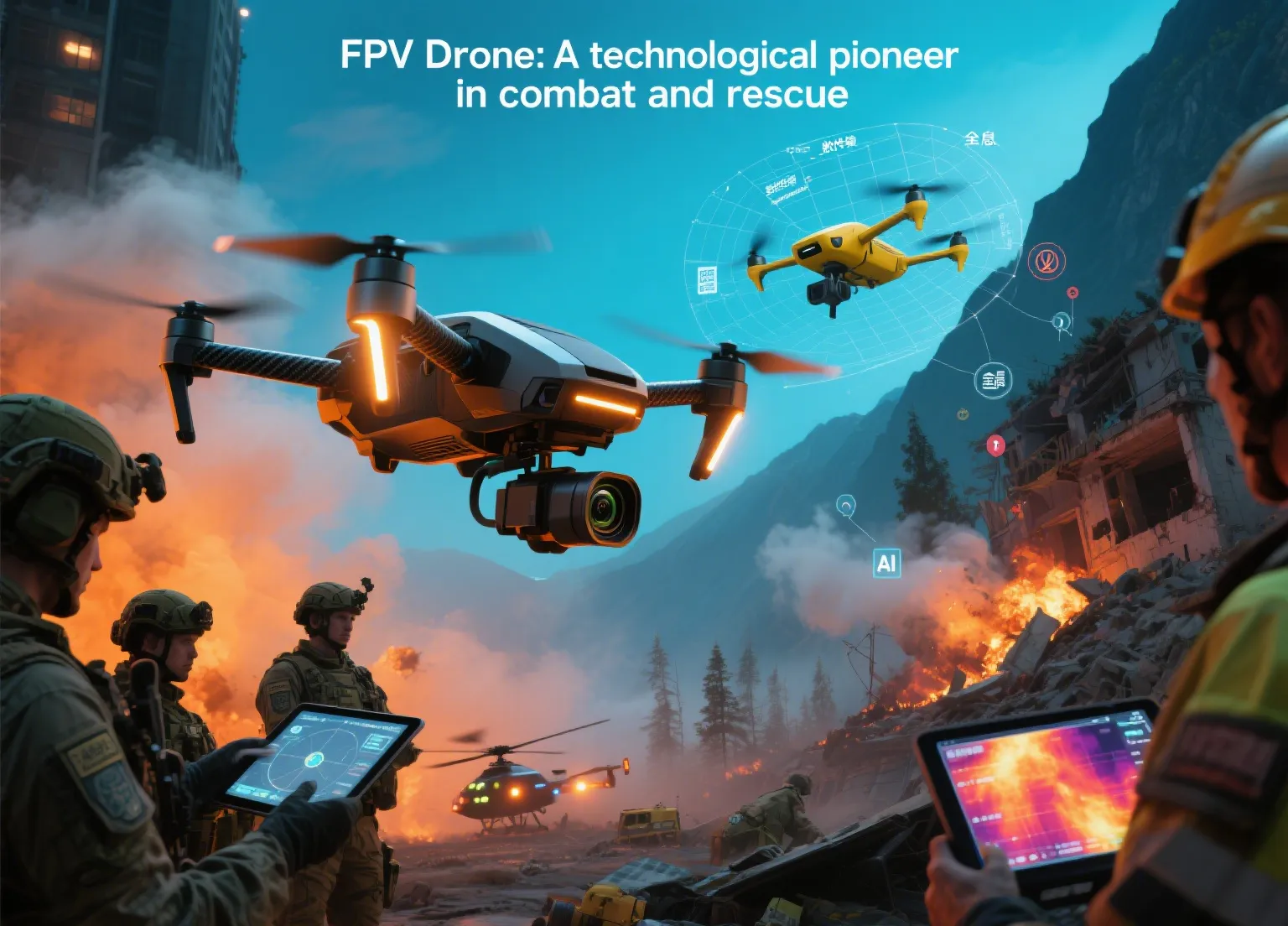
This article introduces the application prospects of FPV (First Person View) drones in military and search and rescue domains. FPV technology allows operators to observe the surrounding environment from the drone's perspective through real-time video transmission, providing critical real-time information. FPV drones offer significant importance and potential advantages in military and search and rescue missions. FPV Technology Overview FPV technology enhances operators' real-time perception through camera and video transmission systems. Although latency issues exist, continuous technological innovations address this challenge. FPV technology plays a crucial role in drone operations, providing essential support for mission execution. FPV drones convert visual scenes into video signals via cameras and transmit them wirelessly to ground control devices. Operators view footage in real-time using monitors or head-mounted displays. Low latency is critical - high delays make control difficult and dangerous. New-generation systems like DJI's O3 Air Unit reduce latency below 30ms through digital transmission. High-resolution lenses and high-refresh-rate displays improve image clarity and operational precision, enhancing reaction speed and decision-making. Military Applications FPV drones have broad military applications, improving reconnaissance, surveillance, and intelligence gathering efficiency. They play vital roles in border patrols, target positioning, and tactical support, delivering real-time intelligence to combat commanders. These drones conduct low-altitude reconnaissance in enemy territory without exposing soldiers. Compared to traditional equipment, they're more cost-effective and deploy faster. In border security, they continuously monitor large areas, detecting and reporting suspicious activities. For tactical support, frontline soldiers use FPV drones to rapidly assess terrain, enemy positions, and safe routes. Since 2023, modified FPV drones have been used for precision strikes and intelligence collection, demonstrating significant tactical value. Search and Rescue Applications In search and rescue missions, FPV drones help quickly locate missing persons or disaster sites. Through real-time video transmission, they effectively facilitate disaster relief, forest fire monitoring, and rescue operations, significantly improving efficiency. They rapidly survey hazardous areas like mountains, forests, or earthquake rubble. The real-time perspective allows immediate target identification. During forest fires, they penetrate high-temperature zones to map fire spread, aiding deployment decisions. In earthquake rescue, compact FPV drones access confined spaces to locate trapped individuals. In 2022, Japanese rescue teams successfully used FPV drones to locate missing climbers in avalanches, greatly enhancing rescue efficiency. Environmental Adaptability Modern FPV drones operate in diverse harsh environments using high-performance motors and stable flight control systems. GPS-assisted navigation and visual positioning maintain stability in complex terrain during strong winds, rain, snow, or dust storms. Manufacturers are developing lightweight batteries and cold-resistant circuits for high-altitude/extreme-cold operations. Certain models can operate at -20°C for over 20 minutes, making them suitable for mountain search missions. Privacy and Security Considerations FPV drone usage requires attention to data security and privacy. Real-time video transmission risks sensitive information leakage if intercepted, potentially compromising military operations. Military FPV drones typically feature encrypted transmission modules and dedicated communication frequencies. Civilian rescue operations must comply with privacy regulations, avoiding recording unrelated individuals or private areas. Developers are implementing AI protection mechanisms and multi-factor authentication to counter electronic interference and hacking attempts, enhancing operational security. Future Development Trends FPV drones are evolving toward greater intelligence. AI enables target, facial, and heat source recognition, improving search efficiency. Autonomous flight technology allows predefined path navigation without manual operation. Multi-sensor integration (infrared, night vision, radar, GPS) enables operation in all lighting and weather conditions. Future FPV drones will become lighter, faster, and smarter - indispensable tools in military and rescue operations.
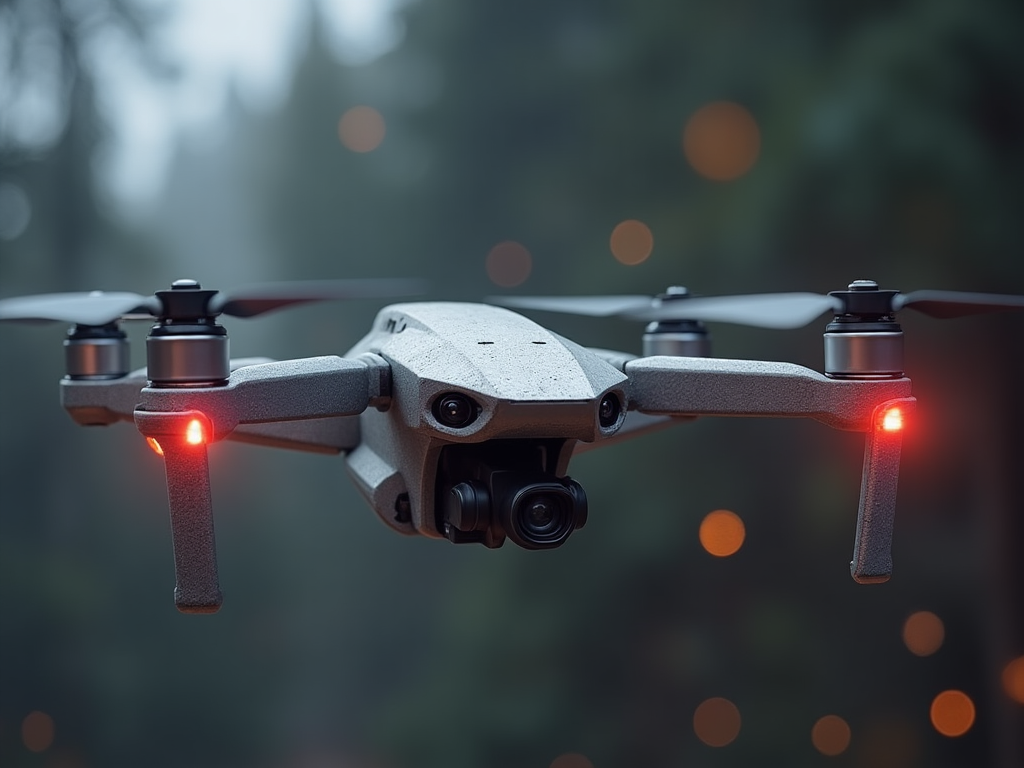
Artificial Intelligence First-Person View (AI FPV) technology brings new perspectives and possibilities to military patrols. This article explores the definition, working principles, and applications of AI FPV technology in military operations. AI FPV Technology Overview AI FPV is a first-person view system realized through artificial intelligence technology. Using cameras and sensors equipped with AI algorithms, the AI FPV system can analyze surroundings in real-time, identify targets, and make corresponding responses. This technology enables military patrol personnel to better understand battlefield situations, improving response speed and accuracy. How AI FPV Works The AI FPV system captures environmental images and data through cameras and sensors in real-time, then uses pre-trained AI algorithms for analysis and identification. It can recognize enemy targets, hazardous areas, or critical information, transmitting this data to operators. Personnel can view real-time footage through head-mounted displays or other devices. Operators typically use head-mounted displays (e.g., FPV goggles) or tablets to access system feeds. This first-person perspective creates an immersive experience that enhances situational awareness and reaction speed. Military Applications of AI FPV AI FPV technology has broad applications in military patrols: - Enables remote battlefield monitoring, reducing personnel exposure to danger - Automatically identifies potential threats like suspicious vehicles or individuals - Supports night vision and thermal imaging for 24/7 operations - Integrates with drones or ground robots to expand patrol coverage For example, AI FPV-equipped drones can surveil conflict zones, stream real-time ground data, and automatically flag suspicious activities for command decisions. Technical Advantages Key benefits of AI FPV include: - Real-time response: Identifies targets and reacts within seconds - High-precision recognition: Distinguishes friend from foe using image analysis - All-weather capability: Operates in darkness and harsh conditions - Risk reduction: Minimizes soldier deployment to hazardous areas - Automated processing: Reduces human error and improves mission success rates Challenges and Future Development Current challenges include: - Data security requirements for military intelligence - Need for stable, encrypted communication networks - Algorithmic bias requiring continuous training - High hardware and deployment costs Future developments focus on: - Higher-resolution cameras for improved accuracy - Enhanced edge computing capabilities - Smaller, lighter devices for multi-platform deployment - Integration with 5G/satellite communications Ethical Considerations Ethical questions require resolution: - Should target identification and engagement be fully automated? - How to balance security needs with civilian privacy protection? - Accountability for AI system errors These issues necessitate clear guidelines before widespread deployment. Conclusion AI FPV has become essential in modern military technology, significantly enhancing patrol efficiency and safety through intelligent automation. As technology advances, its applications will continue to expand across multiple domains. Related product 7 Inch Traversing Drone

In the rapidly advancing field of drone surveillance technology, the DS30A Three-Light Lightweight Pod stands out as a game-changing solution for professional operators. This cutting-edge AI pod combines three powerful sensor systems into one compact, lightweight package, delivering unprecedented surveillance capabilities for both day and night operations. Unparalleled Multi-Sensor Integration The DS30A represents the pinnacle of drone surveillance technology, integrating three critical sensor systems into a single lightweight pod weighing under 970g. This innovative design provides operators with comprehensive situational awareness in any environment or lighting condition. Key features that set the DS30A apart: Triple-Sensor Fusion: Seamlessly combines visible light, infrared thermal imaging, and AI-based recognition 30x Optical Zoom: Captures clear, detailed images even at extreme distances High-Sensitivity Thermal: Detects heat signatures with exceptional clarity in complete darkness Three-Axis Stabilization: Maintains rock-steady imaging during dynamic flight maneuvers Quick-Release Mount: Enables rapid deployment and equipment changes in the field Technical Specifications System Type Gyro Stabilized Multi-Sensor Pod Total Weight ≤970g Visible Light Resolution 1920x1080 @ 60 fps Visible Light FOV 63° x 35° Thermal Imaging FOV 12.5° x 10° Power Requirements 12-28V DC Tracking Speed ±48 pixels/frame @ 60 fps Operating Temperature -10°C to +50°C Storage Temperature -40°C to +60°C Zoom Capability 30x Optical Stabilization 3-Axis Gimbal AI Features Person/Vehicle Recognition, Intelligent Tracking Advanced AI-Powered Surveillance Technology The DS30A Three-Light Lightweight Pod incorporates sophisticated artificial intelligence algorithms that revolutionize how surveillance data is captured and processed. The system's intelligent multi-sensor linkage automatically selects the optimal imaging mode based on environmental conditions, ensuring operators always have the best possible view. Key technological advantages: Adaptive Sensor Switching: Automatically transitions between visible light and thermal imaging based on lighting conditions Smart Target Recognition: AI algorithms identify and classify people and vehicles in real-time Predictive Tracking: Anticipates target movement patterns for smoother tracking Multi-Target Processing: Capable of tracking multiple objects simultaneously Environmental Adaptation: Compensates for fog, smoke, and other visibility challenges Professional Applications The versatility of the DS30A makes it invaluable across numerous professional sectors where advanced surveillance capabilities are required. Its lightweight design and comprehensive feature set open up new possibilities for drone-based observation and monitoring. Primary application areas: Law Enforcement & Security: Perimeter monitoring, suspect tracking, evidence collection, and crowd surveillance Search & Rescue: Locating missing persons in wilderness areas or disaster zones day or night Industrial Inspection: Detecting heat leaks in pipelines, electrical faults, and equipment malfunctions Border Patrol: Monitoring vast border areas for unauthorized crossings Wildlife Conservation: Tracking animal movements without disturbing natural behavior Firefighting: Identifying hot spots and assessing fire spread through smoke Superior Performance in Challenging Conditions The DS30A is engineered to deliver reliable performance when it matters most. Its rugged construction and advanced stabilization system ensure crisp, stable imagery even in demanding operational environments. Performance highlights: All-Weather Operation: Functions flawlessly in rain, fog, smoke, and complete darkness High-Speed Tracking: Maintains lock on fast-moving targets up to 120km/h Long-Range Identification: Recognizes human figures at distances exceeding 1km Low-Light Excellence: Thermal imaging detects temperature differences as small as 0.05°C Vibration Resistance: Compensates for drone vibrations and wind gusts up to 12m/s Seamless System Integration The DS30A is designed for easy integration with a wide range of professional drone platforms. Its standardized mounting system and flexible power requirements make it compatible with most commercial UAVs used for surveillance applications. Integration features: Universal Mounting: Compatible with standard gimbal mounting systems Plug-and-Play Operation: Minimal setup required for immediate use Multiple Output Options: Supports HD video transmission via various protocols Remote Control: All functions controllable from ground station software Data Logging: Records mission data for post-flight analysis Why Choose the DS30A Three-Light Lightweight Pod? The DS30A Three-Light Lightweight Pod represents the future of drone surveillance technology. By combining three powerful sensor systems with advanced AI processing in a compact, lightweight package, it delivers capabilities previously requiring multiple separate systems. For professional operators who demand the highest level of surveillance capability without compromising on payload capacity or flight time, the DS30A offers an unbeatable combination of features: Comprehensive 24/7 surveillance capability in a single integrated system Significant weight savings compared to carrying separate visible light and thermal systems Advanced AI features that reduce operator workload and improve mission effectiveness Robust construction designed for professional use in challenging environments Future-proof technology that adapts to evolving surveillance requirements Ready to elevate your drone surveillance capabilities? Order your DS30A Three-Light Lightweight Pod today and experience the next generation of aerial observation technology!
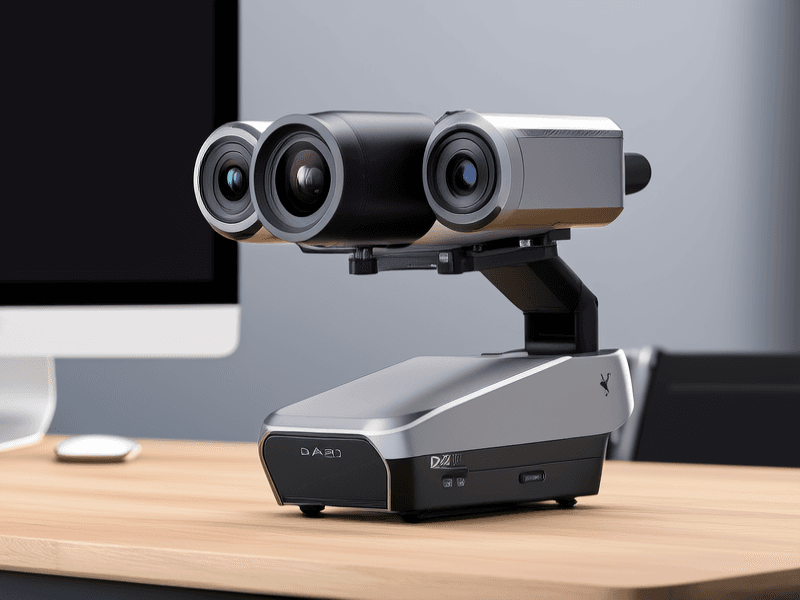
In the realm of professional drone imaging, the DA20 Multifunctional Gimbal stands as a technological marvel, combining three-axis stability with an impressive 22x optical zoom and night vision spotlight capabilities. This cutting-edge Drone AI Pod redefines what's possible in aerial surveillance, inspection, and cinematography. Unparalleled Imaging Capabilities The DA20 Gimbal System represents the pinnacle of aerial imaging technology, featuring a powerful 1080p high-definition camera with 22x optical zoom that delivers crystal-clear footage even at maximum magnification. The system's industrial-grade three-axis stabilization ensures buttery-smooth footage regardless of flight conditions. Key imaging features include: 22x optical zoom with 58.3°~3.2° horizontal perspective range 1080p HD distortion-free video at 30fps 1/2.7” SC2235 CMOS sensor for superior light sensitivity F1.6~F3.5 aperture range for optimal light control 4.7~94mm focal length for versatile shooting scenarios Technical Specifications Video Output 1080P RTSP H.264/H.265 Working Voltage 18V-72V wide input range Power Consumption 160mA (1A with spotlight) Dimensions 126×120×135mm Weight 500g (including shock absorber) Angle Range Pitch: -90° to +45°Yaw: ±150°Roll: ±45° Storage MicroSD up to 256GB (FAT32) Spotlight 3000nits, 6500K, auto-zoom Operating Temp -10°C to +50°C Control Interface SBUS/UART/Ethernet Advanced Night Vision Capabilities The DA20's integrated variable focus spotlight revolutionizes night operations with its 3000nits brightness and 6500K color temperature. The automatic zoom functionality synchronizes perfectly with the camera's optical zoom, ensuring optimal illumination at any distance. Night vision highlights: Intelligent auto-zoom spotlight that matches camera zoom level High-efficiency LED technology for maximum brightness with minimal power draw Precision beam control for targeted illumination Thermal management system for sustained operation Professional Applications The DA20 Gimbal System excels in numerous professional scenarios where superior imaging and stability are paramount: Search & Rescue Operations: The combination of long-range zoom and night vision makes the DA20 invaluable for locating missing persons in challenging conditions. Law Enforcement Surveillance: Monitor situations from safe distances with crystal-clear detail, day or night. Industrial Inspections: Examine infrastructure, power lines, and hard-to-reach areas without risking personnel. Cinematic Productions: Capture stunning aerial footage with professional-grade stabilization and zoom capabilities. Agricultural Monitoring: Survey large fields and identify problem areas with precision zoom functionality. Intelligent Control Features The DA20 offers sophisticated control options that enhance operational efficiency and simplify complex shooting scenarios: One-click return to center position One-click downward orientation for quick inspection Multiple control interfaces (SBUS, UART, Ethernet) Network port for advanced integration Compatible with various drone control systems Why the DA20 Stands Above the Competition The DA20 Multifunctional Gimbal represents a significant leap forward in aerial imaging technology. Its combination of 22x optical zoom, three-axis stabilization, and intelligent night vision spotlight creates a system that outperforms conventional gimbal solutions in nearly every measurable way. What truly sets the DA20 apart is its thoughtful integration of features. The synchronized zoom between camera and spotlight, the industrial-grade stabilization, and the wide operating voltage range all demonstrate a product designed by professionals, for professionals. Whether you're conducting night-time search operations, inspecting critical infrastructure, or capturing cinematic footage, the DA20 delivers performance you can rely on. With its compact 500g form factor, the DA20 brings professional imaging capabilities to a wide range of UAV platforms without compromising flight performance. The system's robust construction ensures reliable operation in demanding environments, while its intuitive controls make complex shots achievable with minimal training. Ready to elevate your aerial imaging capabilities? Discover the DA20 Multifunctional Gimbal today and experience the future of drone imaging technology!
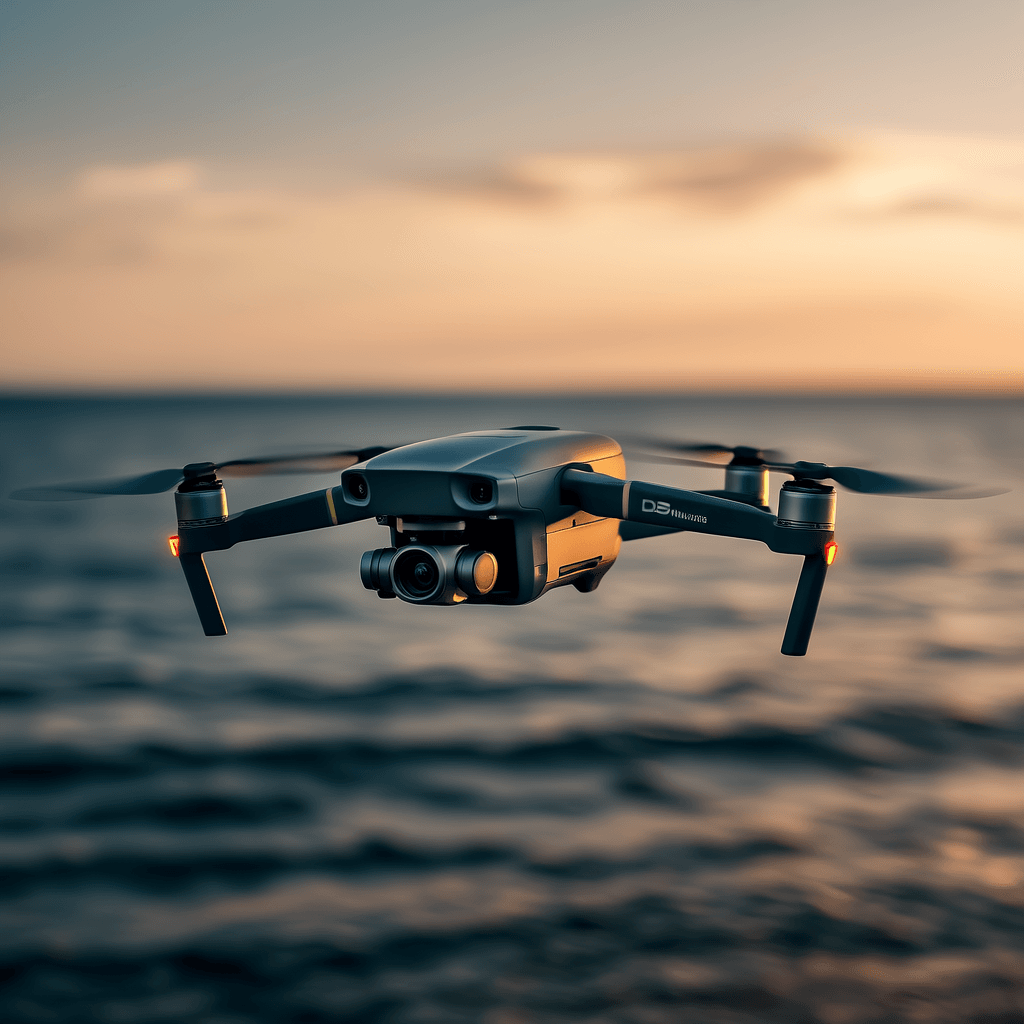
In the rapidly advancing field of drone imaging technology, the DS30 Miniature Pod stands out as a revolutionary solution for professionals requiring high-performance ai smart tracking and imaging capabilities in an ultra-compact package. This cutting-edge gimbal system combines advanced AI recognition with exceptional stabilization technology, making it the perfect choice for surveillance, inspection, and aerial photography applications where precision and reliability are paramount. Revolutionary Features for Professional Imaging The DS30 Miniature Pod redefines what's possible in compact gimbal systems, packing an impressive array of professional-grade features into a package weighing less than 90 grams. Its intelligent design and advanced technology make it ideal for demanding applications where size and performance are equally important. Key features include: AI-Powered Smart Tracking: Advanced recognition algorithms automatically keep people and vehicles centered in the frame for effortless tracking 3x Electronic Zoom: Instantly magnify distant targets without compromising image quality or stability Servo Image Stabilization: Professional-grade stabilization ensures buttery smooth footage even in challenging conditions Ultra-Compact Design: At less than 90g, it's perfect for catapult-launched drones and other space-constrained applications Extreme Durability: Engineered to withstand launch shocks up to 400g and operate in temperatures from -40°C to +60°C Technical Specifications System Type Gyro stability Weight ≤90g Resolution and Frame Rate 1920×1080@60fps Field of View (Focal Length) 51.3°×30.2° (5.8mm) Video Output Network Digital Zoom 3 Times Power Supply 12V Power Consumption Av≤10W, Max≤20W Tracking Speed ≥40°/s Maximum Angular Velocity ≥60°/s Stabilization Accuracy 0.1mrad(1°/2Hz) (1σ) Angular Position Accuracy ≤0.3° Target Type People, vehicles Launch Shock ≥400g Operating Temperature -40°C ~ +60°C Storage Temperature -40°C ~ +60°C Unmatched Performance in a Miniature Package The DS30 Miniature Pod delivers professional-grade performance that belies its compact size. The single-axis design with pitch control from -90° to +40° provides exceptional vertical perspective control, while tracking speeds up to 40°/s ensure you never lose your subject. The stabilization accuracy of 0.1mrad (1σ) at 2Hz guarantees rock-steady footage, even in turbulent conditions. What truly sets the DS30 apart is its combination of high-resolution imaging (1920×1080 at 60fps) with intelligent features. The AI recognition system can automatically identify and track people and vehicles, while the 3x electronic zoom allows for detailed observation of distant targets without physical lens adjustments. All this is powered by a modest 12V power supply with average consumption under 10W, making it highly efficient for extended missions. Versatile Applications Across Industries The DS30 Miniature Pod's unique combination of features makes it invaluable across numerous professional applications where precision imaging and tracking are required in compact form factors. Security and Surveillance: Monitor sensitive areas with AI-powered tracking that automatically follows people and vehicles, providing continuous coverage without operator intervention. Infrastructure Inspection: Capture high-resolution details of bridges, power lines, and buildings with the stabilized 3x zoom capability, identifying potential issues before they become problems. Wildlife Research: Observe animals in their natural habitat without disturbance, using the electronic zoom to maintain safe distances while still capturing detailed footage. Disaster Response: Quickly survey affected areas and track rescue teams or survivors in challenging conditions, thanks to the pod's environmental resilience. Aerial Photography: Create stunning stabilized footage for cinematography or documentation purposes with professional-grade image quality. Military and Defense:</paramount for reconnaissance missions where lightweight, high-performance imaging systems are essential. Why the DS30 Miniature Pod Stands Apart The DS30 Miniature Pod represents a significant leap forward in compact imaging systems, offering professional-level features in a package smaller and lighter than most smartphones. Its combination of AI tracking, electronic zoom, and exceptional stabilization makes it uniquely capable among miniature gimbal systems. What truly impresses is how the DS30 maintains such high performance standards while being rugged enough to withstand catapult launches and extreme environmental conditions. The 400g shock resistance means it can handle the most demanding deployment scenarios, while the -40°C to +60°C operating range ensures reliability in virtually any climate. For professionals who need the highest quality imaging and tracking capabilities in the smallest possible package, the DS30 Miniature Pod is an unbeatable solution. Whether you're inspecting critical infrastructure, conducting surveillance operations, or capturing breathtaking aerial footage, this system delivers the performance you need without compromising on size or weight. Ready to experience the future of compact drone imaging? Get your DS30 Miniature Pod today and elevate your drone's capabilities to professional levels!
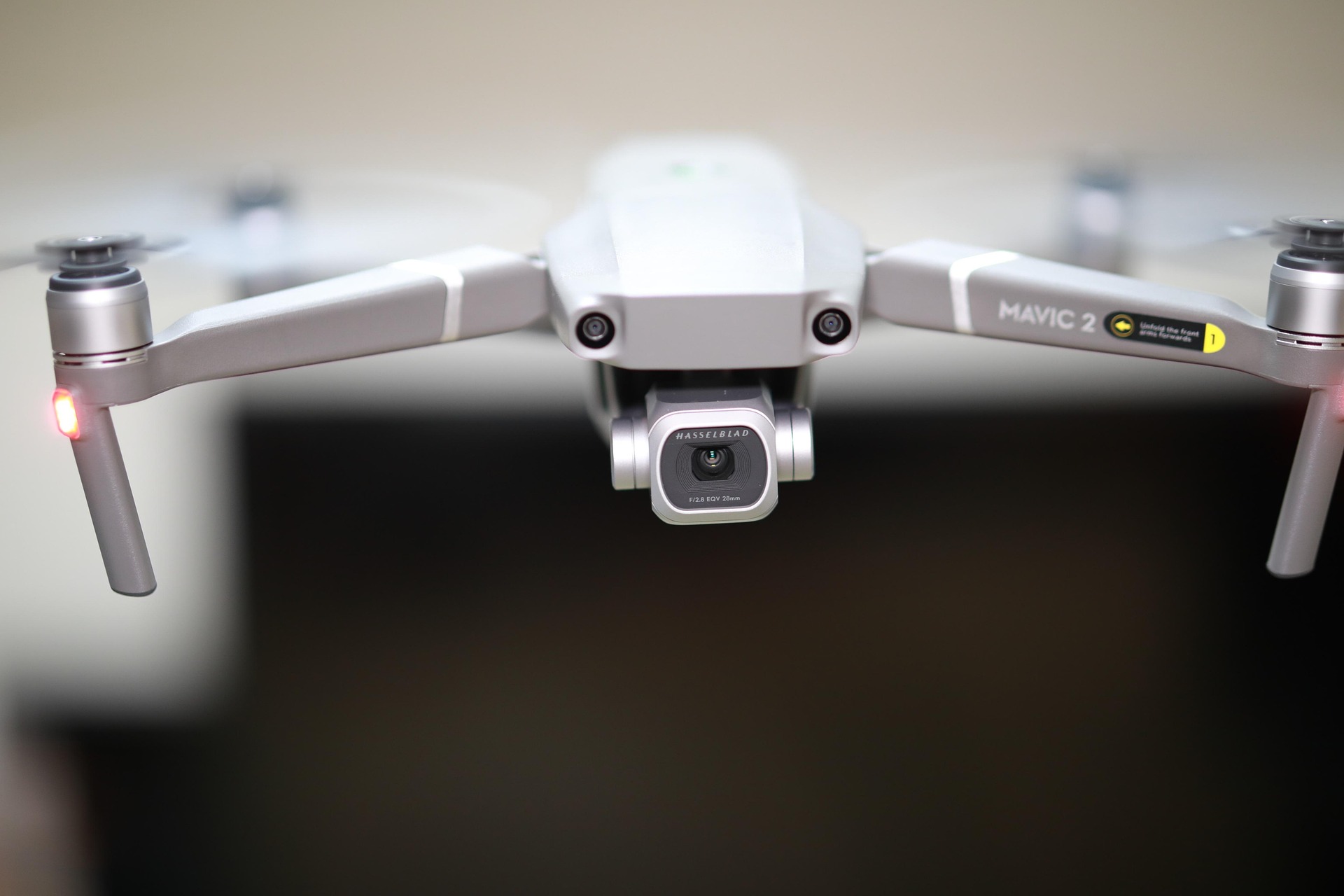
In the rapidly advancing world of drone technology, the DS30BPRO Dual-light Micro Pod stands out as a game-changing innovation for aerial surveillance and reconnaissance. This cutting-edge AI pod combines high-resolution visible light imaging with advanced laser-ranging capabilities in an ultra-compact package that redefines what’s possible in drone-mounted observation systems. Unmatched Surveillance Capabilities The DS30BPRO represents the pinnacle of micro surveillance technology, packing professional-grade features into a pod weighing just 410 grams. Its revolutionary design combines multiple advanced technologies to deliver unprecedented performance for drone operators across various industries. Key performance features include: 30x Hybrid Zoom: Achieves crystal-clear magnification using precision optical lens groups AI-Powered Tracking: Automatically identifies and follows targets including people and vehicles Dual-Sensor System: Combines visible light and thermal imaging for all-condition operation Laser Rangefinder: Provides accurate distance measurements up to 3km with ±1m precision Technical Specifications System Type Gyro Stability Weight ≤ 410g Visible Light Resolution 1920×1080@60fps Optical Field of View 61.3° × 36.9° ~ 6.8° × 3.9° Laser Distance Measuring 3 km (±1m) Pan-Tilt Range Heading: ±360°; Pitch: -100° ~ +100° Maximum Angular Velocity ≥100°/s Power Supply 12~28V Power Consumption Average 10W, Max 20W Operating Temperature -20°C ~ +50°C Breakthrough Technologies The DS30BPRO incorporates several groundbreaking technologies that set it apart from conventional surveillance pods: Three-Axis Stabilization System The advanced gyro-stabilized platform ensures rock-steady imaging even during high-speed maneuvers or in turbulent conditions. This sophisticated system compensates for drone movement across all three axes, delivering professional-quality footage regardless of flight conditions. Intelligent AI Tracking The pod’s machine learning algorithms can identify and automatically track multiple target types with remarkable accuracy. Once locked on, the system maintains the subject perfectly framed while compensating for both target and drone movement. Versatile Professional Applications The DS30BPRO’s combination of compact size and powerful features makes it ideal for numerous professional applications: Public Safety: Law enforcement and emergency services can use the pod for search and rescue operations, crowd monitoring, and incident documentation. Infrastructure Inspection: The high-resolution zoom and stabilization enable detailed examination of power lines, cell towers, and bridges without risky close approaches. Environmental Monitoring: Researchers can track wildlife movements and monitor ecological changes with unprecedented precision. Border Security:Storage Temperature-40°C ~ +60°C 4. Application Scenarios Surveillance and Security: Perfect for monitoring large areas and ensuring high-level security by tracking people and vehicles in real time. Traffic Monitoring: Ideal for analyzing traffic patterns, tracking vehicles, and ensuring the safety of road users. Search and Rescue: The thermal imaging system helps locate heat signatures, making it an excellent tool for search and rescue operations in various conditions. Autonomous Vehicles: A great fit for autonomous systems needing precise location and navigation data through accurate laser and optical feedback. Why Choose the DS30BPRO Dual-light Micro Pod? The DS30BPRO Dual-light Micro Pod represents a quantum leap in drone surveillance technology, offering military-grade capabilities in a remarkably compact and lightweight package. Its combination of high-powered optical zoom, AI-assisted tracking, laser ranging, and three-axis stabilization creates an unparalleled tool for professional drone operators across numerous industries. What truly sets the DS30BPRO apart is its ability to deliver these advanced features while maintaining an ultra-lightweight design that won’t compromise your drone’s flight performance. The pod’s efficient power consumption and wide operating temperature range ensure reliable performance in virtually any environment or mission profile. For professionals who demand the very best in aerial surveillance technology without sacrificing portability or flight endurance, the DS30BPRO stands as the clear choice in its class. Ready to elevate your drone’s surveillance capabilities? Get your DS30BPRO Dual-light Micro Pod today and experience the future of aerial observation technology!


